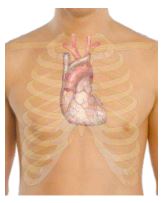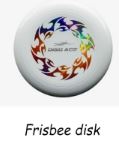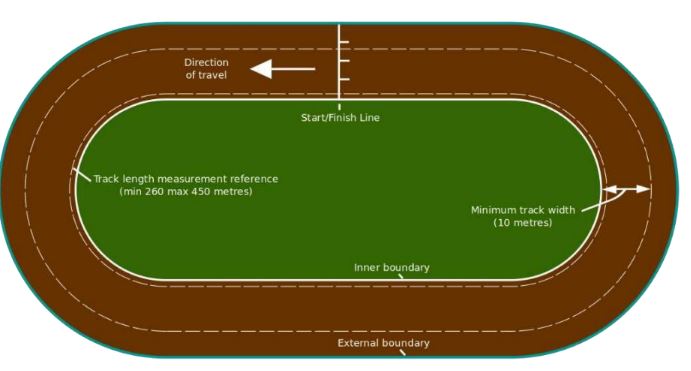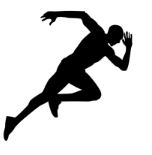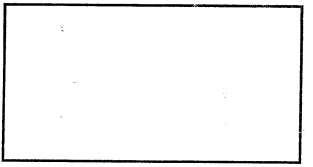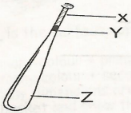Displaying items by tag: physical health education
Wellness - Grade 4 Physical Health Education Revision Notes
Dealing with Emotions.
- They are also called feelings. they include joy, pain, sadness, love and anger.
- Sporting requires a state of wellness: which is a state of complete physical, mental, emotion and social well.
- The immediate effects of negative emotions like anxiety are:
- Lightheadedness.
- Muscle tension.
- Elevated heart and breathing rates.
- Increased blood flow to the brain and away from other organs
- Nausea
- Frequent urination and diarrhea
- Positive emotions, on the other hand, can have opposite effect. Laughter , for example, can:
- Relieve tension throughout the body and within organs
- Relieve the subsequent side effects of depression and anxiety.
- Lower blood pressure.
- The longer- term physiological effects of emotions include;
- Insomnia
- Damage to kidneys
- Digestive and gastro-intestinal problems
- Chronic respiratory disorder
- damage to cardiovascular system.
Alcohol and Drug Abuse in Sports Performance
- Drug abuse: is the use of drugs for a purpose it was not intended for.
Athletes And Drug Abuse.
- Athletes should be clean from abuse of alcohol and drugs
- Doping is illegal and athletes have been disqualified because of the same.
- Athletes should therefore abstain from abuse of drugs because it could lead to:
- Addiction
- Organ failure
- Severe mood swings
- Inability to perform properly in the sporting activity.
- An increased risk of suffering from a heart attack or stroke.
How to tell someone is abusing drugs
- Loss of interest in school
- Changing friends.
- Becoming moody, negative , cranky or worried all the time.
- Ask to be left alone a lot.
- Having trouble concentrating.
- Sleeping a lot
- Getting into fights.
- Having red, puffy eyes.
- Loss or gain of weight.
- Coughing a lot.
- Having a running nose all of the time.
Effects of Drug Abuse in Athletes
- It has many negative effects such as:
- Suspensions and Bans - Many professional athletic organizations have strict rules against using performance- enhancing and recreational drugs. Athletes who violate these rules may face serious consequences, such as suspensions or bans. In some cases, prior titles, medals or prizes may be revoked. professional athletes such as Lance Armstrong, Steve Howe and Brett Favre have suffered these consequences.
- Job loss and early retirement - Drug abuse can impair an athlete's ability to focus and otherwise negatively affect an athlete's performance. Certain drugs will give rise to a number of side effects and may be associated with performance -hindering withdrawal symptoms. Some athletes may be forces into early retirement because of the negative effects of their drug use.
- Health problems- Taking anabolic steroids can result in liver and kidney damage, hypertension, and heart problems. Mental effects can include depression, anger and violence. Men may also experience impotence , infertility, and development of certain female sexual characteristics( e.g enlargement of breast tissue), while women may experience menstrual changes and development of masculine features.
- Andro use can lead to side effects such as decreased sperm production, shrinking of the testicles , and increased breast side in men. In women, it can lead to the development of certain masculine qualities, such as deeper voice and male-pattern hair loss. For both men and women, taking the drug may increase the risk of heart attack and stroke.
- Human growth hormone use is associated with joint pain, fluid retention, muscle weakness and vision problems. It can also lead to carpal tunnel syndrome, high cholesterol, hypertension, enlarged heart, and diabetes.
- Excessive diuretic use can cause dehydration, muscle cramps, dizziness, rash, gout, potassium deficiency, poor balance and coordination, low blood pressure , and even death.
-The risk of using erythropoietin include heart attack, stroke, and pulmonary embolism.
- Alcohol use may impair problem-solving ability, memory, learning, and coordination and can lead to liver and neurological damage.
- Marijuana can negatively affect short-term memory, learning, balance , coordination, and ability to focus.
- short- term effects of amphetamine use include headaches, convulsions, hallucinations and paranoia. Long -term effects may include permanent nerve damage and death.
- Cocaine can cause damage to the heart and respiratory, nervous, and digestive systems. - Opioids such as heroin and prescription painkillers have a high risk of overdose. When these drugs are injected, the user's risk for contracting infectious diseases increases significantly.
- Addiction - The abuse of certain drugs, such as opioids and stimulants, can lead to addiction. Addiction is a brain disease that involves compulsive drug use despite negative consequences. Athletes who are addicted to drugs or alcohol may have a difficult time quitting without professional treatment.
- Death - Amphetamine use may lead to fatal hemorrhagic stroke or heart attack. Abusing opioids like heroin or prescription drugs also carries a high risk of lethall overdose. College basketball player Len Bias and professional hockey player Derek Boogaard both died of fatal drug overdose.
- Suspensions and Bans - Many professional athletic organizations have strict rules against using performance- enhancing and recreational drugs. Athletes who violate these rules may face serious consequences, such as suspensions or bans. In some cases, prior titles, medals or prizes may be revoked. professional athletes such as Lance Armstrong, Steve Howe and Brett Favre have suffered these consequences.
Stereotypes And Drug Abuse.
- A stereotype is an untrue belief of a particular type of person or thing. Some of the common stereotypes associated with drugs include;
- An athlete will become a better performer.
- A learner will become better in academics
- They make a person become popular.
Leisure Activities - Grade 4 Physical Health Education Revision Notes
- Active and Passive Leisure Activities.
- Leisure and Time management
- Care of Community Recreation Facilities.
Active and Passive Leisure Activities.
- Leisure activities are performed for fun.
- There are mainly two types of leisure.
- Passive leisure activities - are activities that someone is not participating in the activity.
- Active leisure activities - are those that someone is fully participant
- Leisure activities give us the opportunities to be ourselves and get creative.
Disadvantages of Passive Activities.
- They lead to development of lifestyle problems and diseases.
- It reduces our creativity and lead to health problems due to long hours spent in sedentary positions
Leisure and Time management
- Time management - is the ability to organize activities one has perform in a given amount of time to leisure time is the free time.
- It is good to take time off from studies and from watching television to engage in a leisure activity individually or with friends.
- Leisure activities include:
- Reading a story book.
- Taking nature walks.
- Volunteering at the local children's home.
- Taking part in artistic activities such as painting.
- Listening to music.
- Attending as sporting activity as a spectator.
Care of Community Recreation Facilities.
- These are sometimes referred to as public facilities and are services offered by the state to its citizens.
- There are various ways of taking care of these facilities.
- By avoiding littering these areas.
- Planting trees in these areas.
- Finding an alternative source of fuel.
- Drawing graffiti (unauthorized writing or drawing on a public surface) on the walls of these areas should be discouraged to preserve their beauty.
Nutrition And Sports Performance - Grade 4 Physical Health Education Revision Notes
- How to know when my body needs water.
- Ways of Taking Clean Water
- Healthy Eating Habits
- Food Intake During Physical Activity
- Nutrition refers to the process of obtaining nutrients that are necessary for the proper functioning and growth of the body.
- Hydration refers to the state of the body having enough water while dehydration is lack of the required amount in the body..
- The human body is composed of about 75% water.
How to know when my body needs water.
- The darker your urine, the more likely you are not drinking enough water to maintain health.
Apart from physical activities, the following could also lead to dehydration.
- Hot weather causing you to sweat a lot.
- Not drinking enough water.
- Drinking too much sugary drinks.
- Fevers and other illnesses.
- Lack of access to safe drinking water.
Ways of Taking Clean Water.
- By boiling it.
- By adding water guard.
- By using simple water purifiers.
Hydration- making the body absorb water or other liquids.
Dehydration- harmful reduction of amount water in the body.
Healthy Eating Habits
- A balanced diet is a meal that has all the nutrients necessary for proper growth of the body.
Benefits of Making Healthy Food Choices During Games and Sports
- Provide us with nutrients we need for good muscle development.
- It helps us fight diseases easily if we get sick.
- It helps our muscle recover quickly after an exercise activity.
- Give us energy to take part in the physical activities.
Nutrients - a substance or ingredient that promotes growth, provides energy and maintains life.
Balanced diet - a meal with all the required nutrients in proportions.
Food Intake During Physical Activity
- When growing the body needs a lot of energy.
- Children need a plate that is one-third ratio division. This means that one-third has proteins, the other carbohydrates and the last third vegetables and fruits.
- One needs to eat a meal rich in complex or whole starch before an exercise.
- Eating should be done at least 2hrs before you go for sports. This will allow the food to be digested and release energy the body needs.
- The major food groups that make up a balanced diet include.
- carbohydrates - they are energy giving foods eg ugali, bread, chapati, rice.
- Proteins - they are body building foods which include: meat, grains , eggs, nuts
- Fats and oils: they provide protective shield around major organs like heart, kidney and liver. They include: oily fishes, nuts, avocado.
- Vitamins and mineral salts - they are protective elements and are needed in small quantity. They are found in vegetables and fruits.
Health and Physical Fitness - Grade 4 Physical Health Education Revision Notes
Warm Up And Cool Down Activities
- Warm up: activities that are done to prepare the muscles for vigorous activities.
Importance of Warm Ups
- They prepare the body for the game of the day
- Muscles become warm
- The blood begins to warm up.
- The joints become more flexible, they can move easily.
- Helps to prevent injuries.
- The brain becomes prepared for the activities.
Cool down activities are activities that are slow and easy.
Importance of Cool Down Activities
- The heart beat goes back to normal gradually.
- The muscles stretch easily without being injured.
- Helps to take blood back to the heart and the rest of the body gradually.
The Human Heart.
- The human heart is located between the lungs.
- It is protected by the ribs in the rib cage. It helps to pump blodd thoughout the body.
- The heart pumps blood to the lungs to get oxygen and remove carbon dioxide.
- This pumping gives the heartbeat. the normal heart beat of an adult is 60-100 beats per minute/
Functions of The Heart
- Pumping oxygenated blood to the other body parts.
- Pumping hormones and other vita substances to different parts of the body.
- Receiving deoxygenated blood and carrying metabolic waste products from the body and pumping it to the lungs for oxygenation.
- Maintaining blood pressure.
What happens to the body during exercise?
- The heart beats faster.
- The person sweats a lot
- The person gets thirsty.
- The body tempeerature increases.
- The person breathes harder.
- Blood flow inside the body increases to the brain and muscles.
- The bones becomes stronger.
- One gets tired and hence gets difficult to talk.
Cardiorespiratory Endurance.
- The system is composed of the lungs, the heart, the blood and the blood vessels.
- Cardiorespiratory endurance is the ability of the heart and lungs to work together when you are doing an exercise for an extended period of time. We can develop the endurance by:
- Running
- Brisk Walking
- Jogging
- Cycling
- Swimming
- Dancing.
Human Muscles
Muscular Strength
- Muscular strength refers to the maximum force produced by a muscle or group of muscles in a single muscular contraction.
- Muscular strength can be achieved by using weights.
We need strong muscles because:
- They reduce the chances of getting injuries while doing your daily activities.
- They reduce body fat and increase lean(containing little or no fat) muscles in the body.
- Helps to maintain correct posture.
- Helps in carrying out the day-to day activities.
- Helps in maintaining strong bones that have high bone density.
Muscular contraction: changes in the length of muscle
Muscle Endurance
- Refers to the ability of a muscle group to perform a repeated action without getting tired.
Importance of muscular endurance.
- Helps increase our stamina for performing daily chores for example cleaning the classroom and gardening.
- Helps us in preventing injuries that would be caused by overuse of our active muscles throughout the day.
- Increasing your muscular endurance will make everyday chores and tasks easier. Training muscular endurance will increase your stamina- you'll have more energy to go from your job to playing with your kids, for example.
- You will find that performing repititive physical activity such as gardening, raking leaves and washing your car- will become less fatiguing too. Emphasizing the importance of endurance in your training will also limit injuries sustained from physical exertion and from the overuse of active muscles throughout the day.
- Helps us improve our posture by strengthening our major muscles that are necessary for activities such as sitting in class for long hours.
- Helps avoid lower back pain by strengthening the endurance of the abdominal and lower back muscles.
Muscular And Joint Flexibility.
- Flexibility refers to the capacity of a joint or muscle to move through its full range of motion.
The benefits of taking part flexibility.
- The body gets more freedom of movement.
- Body posture is improved.
- Tearing of muscles is reduced.
- Helps to relieve muscle tension.
- Increases our mental and physical relaxation
Frisbee Game - Grade 4 Physical Health Education Revision Notes
Frisbee Game
- Freesbee game is played by throwing a disc.
- Thrower- player who has disc and propels it to opponent.
- Court- an enclosure or field marked out for playing games like Frisbee.
One Handed Rim Catch.
How to perform one- handed rim catch
- Watch and time the oncoming disc carefully as it fliew towards you.
- Stand with your feet shoulder-width apart with kneew slightly bent.
- Aim to catch the disc with one hand.
- Catch the disc between your thumb and fingers.
Forehand Throw
- It is also knwon as the flick. It is one of the two common ways to throw a frisbee.
Backhand Throw.
- One of the easiest and most common throws. It is inspired by the backhand in lawn tennis and can be used in short, medium and long-range passing.
How To Perform Backhand Throw
- Grip the disc with one hand.
- Swing the throwing hadn backwards.
- Stand sideways in the direction you want to throw, with knees slightly bent ans legs shoulder width apart.
- Take the disc back around the body.
- Bend your elbow slightly as shown below.
- Bring arm around quickly.
- At the same time, step on to your target and leg go of dic by flicking wrist with power.
- Begin by thrwoing the disc using the wrist only. Don't use your arm yet.
Swimming - Grade 4 Physical Health Education Revision Notes
Strokes
Front crawl - a stroke where the arms are moved alternately overhead accompanied by a flutter kick to propel a swimmer orward.
Body Position While Swimming
- Keep your body flat, lie facing down in the water with your body kept in line with the water surface.
- Keeping the body straight makes swimming easier.
Arm Movement
- Arm pull- Practice it with your palms facing down, pull in line with your body with a slightly bent elbow all the way to the side of your upper thigh.
- Arm recovery -with your hand close to your upper thigh, lift the arm out of the water with bent elbow. Reach forward over the water with a bent elbow and enter the water with our fingerprints.
Leg Action
- Involves straightening the legs with pointed toes.
- Ankles remain relaxed and flexible.
- Kick the legs up and down in a continuous motion.
- Do not bend the legs.
Safety Tips.
- Swimming in proper costume.
- Leave your shoes in the changing room/
- Take a shower before entering the pool.
- Tuck long hair or hold it tightly.
- Visit the toilet before getting into the pool.
- No pushing each other into the water or play around the pool.
- Do not dive in the shallow end of the pool.
- Have an adult who knows how to swim with you when around the pool and during swimming.
- No eating or chewing gum during swimming lessons
- If you have an open wound or bruise, don't get in the pool.
- Do not swim immediately after taking meals.
- Ensure there is a life saver on alert.
Flutter kick: A basic skill in swimming used to stabilize and propel your body forward in the water with your legs.
Diving
Crouch Surface Dive.
How To Perform The Crouch Surface Dive.
- Start from a crouch position.
- Curl the toes of the front around the edge of the pool with the other foot slightly behind.
- The arms and hands are pointed at the entry point with the head tucked in.
- Push off from the feet and straighten at the knees to dive.
Safety tips
- Do not dive if not accompanied by swimming teacher/ instructor.
- Diving should be performed in pools with adequate water.
- Do not dive when there are swimmers in the diving area.
- Always observe safety rules when swimming.
Deck: a raised flat surface.
Standing Surface Dive.
- Standing surface dive is a shallow dive performed from a standing position.
Practicing Standing Surface Dive.
- Stand with the feet together, toes curled over the edge of the pool.
- Place arms straight above the head toucvhing the ears wiht the arms.
- Bend the knees slightly
- Tuck chin, bend at the waist pointing fingers towards the water.
- Tilt towards push off from the feet, through the hips and dive into the water fingers first.
- As the leg follows, the upper body straightens and then out then out and the point toe out.
Gymnastics - Grade 4 Physical Health Education Revision Notes
Rolls
Forward Roll
- Is performed by moving from standing position to a quite with the chin tucked in.
- This starting position transforms into a roll and back to the feet in one motion without the support of the hands while standing.
How To Perform The Forward Roll
- Squat (to posiiton yourself closer to the ground balancing on the front part of your feet with your legs bent under your body.) down and place the hands shoulder-width apart.
- Tuck the chin and head towards the chest.
- Roll forward, push over unto the upper back so that the body rolls forward and the hips are pushed over the head.
- Straighten the legs and point the toes throughout the roll.
- Stand without using your hands for support.
Safety Tips
- Warm up befire performing the forward roll.
- Perform the activity in an open flat and safe place.
- Have proper attire, loose fitting and comfortable clothing.
- Make contact with the floor using back of the head and shoulders and nebver the top of the head.
Backward Roll
- Is similar to the forward roll but is performed in reverse(going backwards)
How To Perform The Backward Roll
- Squat into a tuck position ( a body position where the knees and hips are bent and drawn into the chest.)
- Place hands on your ears with open plams, facing upwards.
- Bring the chin to the chest
- Sit while tucked and push backwards to begin the roll.
- Extend the arms and push wiht arms to complete the roll.
- Land on your feet and extend the legs to stand.
Balancing
Headstand Balance
- Is an inverted balance. The performer balances his or her body with the forehead.
How to Perform
- Kneel or squat on the mat or grass.
- Place hands about shoulder width or slightly wider with fingers pointing forward.
- Hands and the top of the head should form a triangle shape.
- Tuck the chin downward and bring forehead down to the mat.
- Lift up the knees to straighten out the legs.
- Bring the knees to armpits and into the chest.
- Raise the knees and extend the legs straight up out of the tuck.
- Hold the headstand for a few minutes.
- To release the headstand, bend at the knees and bring both legs down back to tucked position in frontof the chest.
Handstand Balance
- Is the act of supporting the body in a stable, inverted position by balancing on the hands.
How To Perform The Headstand Balance
- Start in an upright standing position. Hands stretched staright over the head.
- Place one foot in front on the ground or mat. Place both hands in front on the ground or mat, shoulder width apart, with fingers spread out slightly and facing forward.
- Using the momentum(force that keeps the body moving) from placing one foot in front of the other, kick one leg up then follow with the other leg.
- Keep the arms straight and hold the balance.
- To release the handstand, bring legs down one after the other and lunge to an upright position.
Sequence
Two Action Sequence.
- A sequence is a gymanstic activity where two or more skills are performed together, creating a different combination skill.
- A tow action sequence involves the performance of the two action gymnastic skills which involve travelling, jumping , rolling and balance.
- This is similar to playing ball games where different skills such as passing , catching, running and jumping are put together.
- The purpose of a sequence is to connect movements into smooth and flowing sequence without hesitations or stops.
Three Action Sequence
- Involves the performance of three action gymnastic skills which may involve travelling, jumping , rolling and balance.
- Squat - to crouch or sit with one's knee bent and one's heels close to or touching one's behind.
Four Action Sequence
How To Perform The Four-Action Sequence.
- A four- action sequence involves four gymnastic skills
- The sequence has four skills such as handstand, T-balance, a handstand into a T-balance or single leg balance dorward roll. T- balance backward roll.
Locomotor Skills - Grade 4 Physical Health Education Revision Notes
Athletics Track
- It is a ground or surface that is oval in shape.
- It comprises of two parallel sides joined together by two semi-circular bends
- An athletics track has a starting and finishing point for different races.
Safety tips:
- As you participate in running 100m and 200m, you need to observe the following safety measures.
- Perform warm up activities before running
- Do not cross in front of each other while running
- Look out for objects like stones and remove them from the track.
- The safety precautions assist to avoid injury of self and others while using the athletic track. You are therefore required to observe these rules for your own safety.
Standing Start
How to Perform a Good Standing Start
On your marks:
- Place one foot forward pointing directly ahead
- Place your other foot back pointing directly ahead
- Your feet should be about shoulder-width apart
- Look at the ground ahead.
- Look at the ground in front of your feet.
Go
- Drive your arms and legs forward.
- Step through with the back foot first
- In every game, it is good practice for fair play. This means fair competition, equality and respect for rules and players.
Standing Long Jump
How to Perform the Standing Long Jump.
- You should place both feet at shoulder-width.
- Then stand up with arms raised and rise up on to the balls of the feet with hips extended.
(Balls of the feet - portion of the sole between the toes and the arch) - Then bring the arms back behind you and bend the knee and hips
- Drive as powerfully as possible off the ground while throwing the arms forward as forcefully as possible.
- Once you are airborne, extend the hips up and out and throw the feet forward.
- Land flat footed slightly forward.
- Avoid falling backward or forward.
Safety tips:
- before you jump, ensure you have done warm up activities
- Make sure the landing are is level, there are no stones, holes and it is not slippery.
- Use the correct technique while doing the standing jump.
- While undertaking the standing jump, team work is most important for the success of the game. It means working together to achieve set goals.
Art & Craft, Music and P.H.E Questions and Answers - Grade 5 End of Term 2 Exams Set 2
SECTION A
ART AND CRAFT (20MARKS)
- Name three things you can use when making wax crayons.
- ____________________________
- ____________________________
- ____________________________
- Name one primary colour _____________________________
- Give 2 examples of secondary colours.
- _______________________________________
- ________________________________________
- Name two materials that you can use for basketry.
- ____________________________________
- ____________________________________
- A place where we dry and harden the modelled items is called a ________________________________________
- Which technique has been used to add value in the picture below?
(cross hatching, smuldge)
- _____________ is the surface appearance of an object. (value, colour, shade)
-
- Primary colour + primary colour = ________________________
- Primary colour + 'secondary colour = ______________________
- How many dimensions are there in a 3D artwork?__________________________________
- Draw a basket and show the warps.
SECTION B (20 MARKS)
MUSIC.
- Some songs are sung when people are happy while others are sang when people are sad. Sadness or happiness in a song is the ____________________________ (tone, mood, value)
- Write the first line of the East African Community Anthem.
___________________________________________________
___________________________________________________
___________________________________________________ - When two voices are in agreement while singing together, they are said to be in ______________________________
(speed, harmony, rhythm) - In which languages are folk songs perfomed? __________________________________
- I am the person who plays instruments in a song. What is my name? ________________________________
- How do we play this instrument?
______________________________________
- We play this instrument by ___________________________
- Name two parts of a descant decorder.
- _____________________________________
- _____________________________________
- Draw a symbol for the following note.
tag
SECTION C (20 MARKS)
PHYSICAL AND HEALTH EDUCATION
- Explain the meaning of the following commands as used while starting an elongated start in athletics.
- On your marks - __________________________
- Get set - ___________________________
- Go - __________________________
- Identify the four stages of hurdling.
- _______________________________
- _______________________________
- _______________________________
- _______________________________
- Name three physical fitness gained from participating in hurdling events.
- ____________________________________
- ____________________________________
- ____________________________________
- Identify two tools and equipment that are needed while playing softball.
- ____________________________________
- ____________________________________
- The diagram below shows a softball bat. Name the parts labelled X, Y, and Z.
X_____________________________
Y_____________________________
z_____________________________ - Name 2 examples of throwing skills in the game of rounders.
- _____________________________________
- _____________________________________
- Briefly explain the following terms as used in the game of rounders.
- Push pass ___________________________________
- Stance ______________________________________
- Stamping ____________________________________
MARKING SCHEME
Section A: Art and Craft
-
- Paraffin
- Cutting tools
- Bees wax
- Blue/yellow/red
-
- Orange
- Green
-
- Banana fibres
- Palm leaves
- Sisal fibres
- Kiln
- Cross hatching
- Colour
-
- Secondary colour
- Tertiary colour
- 3 dimensions
- Check diagram
Section B: Music
- Mood
- Ee Mungu twaomba uilinde
- Harmony
- Local languages
- An instrumentalist
- By hitting
- Blowing
-
- Mouth piece
- Thimble hole
- Check diagram
Section C; P.H.E
-
- The body shpould be in a crouch position
- Get ready with the whole body while the hips are raised abovethe shoulders.
- Press hard against the nground for a forward push
-
- Approach
- Take off
- Flight
- Hurdle clearance
-
- Makes bones and muscles stronger
- Makes one to be active
- Promotes brain function
-
- bats
- soft balls
- X-knob
Y-Handle
Z- Barrel -
- Under arm
- Over arm
-
- It is a type of pass used to move a ball by a push action
- Refers to the placement of a kicking foot and the arms when performing a push pass
- Stepping on a player who is on the ground.
Outdoor and Recreational Activities - CBC Grade 5 Physical Health Education Revision Notes
Outdoor activities are done outside class. They enhance learning through nature.
Suitable sites for these activities are mountain sides, rocky areas, near water bodies like rivers.
Planning.
While choosing suitable places for outdoor activities, you should consider;
- Accessibility for learners with varied needs.
- Services and amenities (toilets, water e.t.c).
- Cost.
- Security.
- Weather (rainy or sunny season).
- Mode of transport.
- Location (convenience).
- Outdoor activities help us to find peace in nature, have fun, learn and relax.
- An outdoor activity should include all the activities from departure to coming back.
- The following is a two days sample of outdoor activity programme;
Days Time Programme Day 1 8 am – 11 am
11 am – 12 noon .
1 pm – 4 pm
4 pm – 6 pm
6 pm – 8 pm
8 pm – 9 pm
9 pm – 6 amTravelling to Masai Mara Park.
Arrival and setting up tents
Game drive
Visiting Masai Mara market.
Dinner.
A recap of the day.
Sleeping and waking up time.Day 2 6 am – 7 am
7 am – 9 am
9 am – 12 noon12 noon – 1 pm
1 pm – 4 pmMorning workout (aerobics).
Take bath and breakfast.
Hiking and team building activities.
Lunch.
Travelling back.
Health measures to observe before taking off for the activity.
- Clean food packaging.
- Pack boiled water.
- Wash hands as they pack the food.
- Clean the raw food such as fruits before packaging.
- Dispose off waste appropriately.
Health measures to observe during the outdoor activity.
- Cover the drinking water all the time.
- Store the food in a clean and dry place.
- Ensure that food is well cooked, especially meat.
- Do not congest or overcrowd.
- Sleep in a well-ventilated place.
- Wash hands all the time especially when handling and eating food.
- Ensure the wash rooms are kept clean.
Safety measures to observe before taking off for the activity.
- All persons going for the activity should make sure they are in good health.
- Have a well-equipped First Aid kit.
- Take the learners through basic First Aid and fire drill.
- Write a letter to inform the head teacher and the security team.
- Inform the parents and guardians to get consent.
- The lead person should be a good first aider.
- Have a programme ready for the activity.
- Inspect the area to go to in advance.
Safety measures to observe during the outdoor activity.
- Do not move away from the team without permission from the team lead.
- Avoid areas of natural hazards.
- Do not wander alone to avoid getting lost.
- Devise coded language to alert for danger.
- Adjust the programme when adverse weather is noted.
- On arrival, acclimatize the learners to the surrounding.
- Have a fire rally point (assembly point).
- Arrive early to avoid inconveniences.
- Always observe discipline.
Tracking Signs.
- These are objects or markers used to help a group move without getting lost during outdoor activity.
- It is a method of communication between different groups by giving directions in an outdoor activity.
- The signs are made from small rocks, stones, wood and sticks.
Importance of tracking signs for an outdoor activity.
- To show the direction followed.
- To warn about dangers ahead.
- To inform whether you have arrived at the campsite.
- To find someone if they get lost.
- Signs are easy to understand.
Roles And Responsibilities.
These are duties or work each member does when in an outdoor activity. It is important to be in groups with group leaders assigned.
Each member has a role to play in the group.
Qualities of a group leader.
- Should have a positive attitude towards others.
- Must be well disciplined.
- Should have effective communication skills.
- Must be quick in thinking.
- Readily inspires others.
- A committed person.
- Should be good in decision making.
- Good in time keeping.
- Has integrity.
- Creative.
Responsibilities of a group leader.
- Holding group members accountable.
- Sharing work among group members.
- Helping in resolving conflict.
- Peer counselor.
- Advising team members.
Roles of the other members of the group.
- Fetching firewood.
- Cooking.
- Pitching the tents.
- Washing utensils.
- Laying tracks.
Conflict Resolution.
A conflict is a serious disagreement or quarrels between members of a group.
Conflict Resolution are ways a group settles their quarrels and disagreements during outdoor activity.
People have different views about issues and all are entitled to be considered. Conflicts should be settled in a friendly manner.
Causes Of Conflicts In A Group.
- Poor communication.
- Unfriendly relationships.
- Lack of enough space for all team members.
- Disagreements in power.
- Unwillingness to share resources.
- Lack of planning.
- Poor selection of a leader.
- Favoring some group members.
Consequences of conflicts in a group.
- Misunderstanding among the group members.
- Group members often quarrel.
- Members disagree.
- Some members feel frustrated and angry.
- Criticism and lack of support.
- Tension amongst members.
- Some group members may not want to play with others.
Ways of avoiding conflicts.
- Giving support and encouragement to group members.
- Job sharing.
- making use of volunteers.
Ways of Resolving Conflict.
- Talking openly about your feelings.
- Listening to each other.
- Discussing different solutions as a group.
- Being fair to each other.
- Asking for forgiveness when you are on the wrong.
- Learning to walk away when nothing else works.
Food Preservation.
Food preservation refers to how food is either treated or handled to ensure it stops or slows from being spoilt.
If properly preserved or handled, food can go for a long period without getting spoilt.
Methods of preserving food;
- Drying.
- Canning.
- Heating.
- Boiling.
- Bottling.
- Salting.
- Smoking.
- Fermentation.
- Sugaring.
- Freezing.
Different foods use different methods of preservation. During an outdoor activity, you should use the correct method of food preservation depending on the food you have carried.


